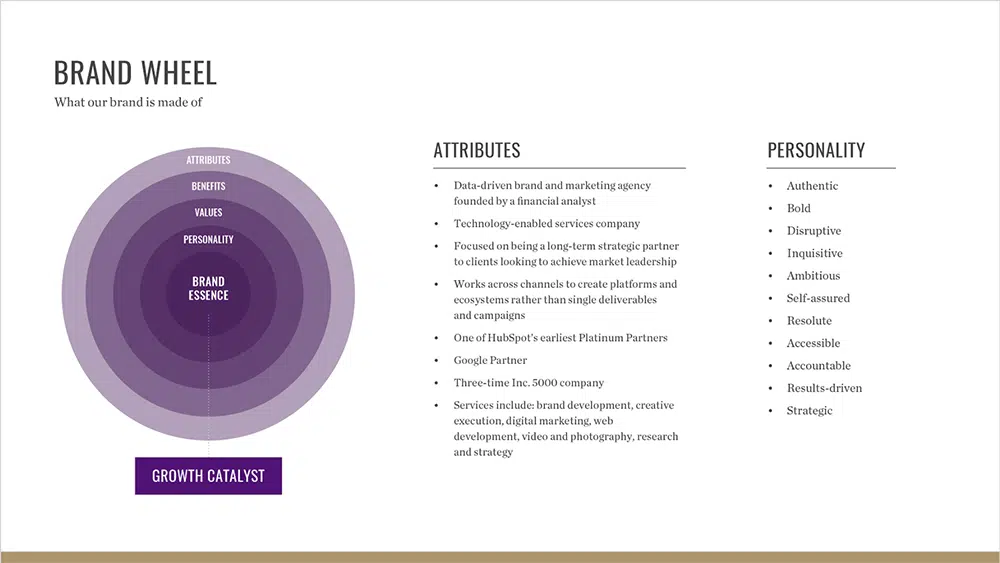Apple. Crest. Keurig.
Those are just a few of the brands you might encounter each morning as you turn off the alarm on your phone, roll out of bed, brush your teeth, and turn on your single-serve coffee maker. Before you know it, you’re driving by rows of billboards and hearing about the sponsors of your favorite podcast as you commute to work.
You get the idea. We’re constantly interacting with brands, all day, every day. And many of these interactions take the form of advertisements. (In fact, it’s been estimated that we’re bombarded with up to 10,000 marketing messages a day.) So it’s no surprise that we ignore or even avoid many of these messages. So how does your brand grab people’s attention in such a crowded and noisy landscape where people tend to tune you out?
Let’s first examine the modern consumer mindset. Then we can explore some strategies for showing up in the right places at the right time—and in the right way.
Awareness and the modern consumer
While no two consumers navigate the exact same path to purchase, they follow a similar progression of stages in becoming aware of your brand. Seth Godin describes seven stages in that awareness path:
- Unaware
- Aware
- Categorized
- Have an opinion
- Experienced
- Have a new opinion
- Have shared that opinion
Let’s say someone already has an opinion of your brand. Are they actually going to buy it? Former Procter & Gamble CEO A.G. Lafley coined the term “First Moment of Truth” in 2005 to describe that moment when the shopper is in the store aisle making the decision of which brand to buy. Crest or Colgate? Then the second moment of truth is the experience. Do I actually like what I’ve bought? If I really like something, I tell people about it. Third moment of truth.
Six years later, Google showed just how much pre-shopping behaviors have changed that mental model. Their “Zero Moment of Truth” study revealed that consumers then consulted an average of 10.4 sources before buying. By 2015, this number had doubled to an average of 22 sources, with up to 40+ sources in industries like travel and hospitality.
So how does your brand move people farther along that awareness path as they consult everything from websites to product reviews to tweets from their peers? With a deep understanding of who these people are, where they are, and what they need.
Learn what they love (and hate)
Some companies make the mistake of trying to be everything to everyone. Smarter companies invest in really knowing their audience segments; this investment can take a number of different forms ranging from online surveys to phone interviews to observations of them using your products.
Many people are probably unaware of your brand, especially if you’re a startup or you’re marketing relatively new products or services. So find out what distinguishes the people who love your product. Where do they hang out online? What are their attitudes about your product, and what needs does it fulfill? Where is it missing the mark?
Observing how people use your products can be insightful. For instance, Lego was able to break into the girls’ market after observing differences in how children play. On average, girls wanted figures with greater detail and realism—as opposed to boys, who were more interested in the battle of good versus evil. That realization informed everything from Lego’s go-to-market strategy to how they messaged the products for girls.
You’ll also want to listen intently on social channels by monitoring brand mentions and relevant hashtags, including any unique hashtags you may have created. What are people saying about your brand? What are they saying about competitors? Identify where people are talking about the types of products you offer and become a helpful participant in those conversations.
Marketing guru Jay Baer notes that one-third of all customer complaints go unanswered. In his book “Hug Your Haters,” he argues that you can’t afford to ignore those who gripe and complain about you. And he lays out specific frameworks for how to handle their complaints.
Get your story straight
Your story sets you apart. Because you have a unique one to tell, take the time to define the different layers of your brand so you can play to your strengths in telling it both internally and externally—while looking and sounding different than everyone else.
At Element Three, one essential part of our branding process is called the “Brand Wheel.” This wheel helps our clients clarify their brand by breaking it down into five areas: Attributes, Benefits, Values, Personality, and Essence.
Example of the brand wheel
Understanding your different brand layers helps you craft a story that’s unique and compelling. One that’s consistent across different channels, and that you can expand over time. A story that resonates with people on an emotional level while reinforcing how your products and services are different.
Grab their freaking attention
While consumers are inundated with information, they still hunger for the right content. Content that’s unique, intriguing, and enlightening. Content that helps them solve problems or causes them to question their assumptions.
Moz founder Rand Fishkin made waves in the digital marketing world in 2015 with his concept of “10x content.” He challenged traditional thinking in the SEO world with his post “Why Good Unique Content Needs to Die,” arguing that the bar for content was set too low—that you needed to create content that’s 10 times better than anything currently available to really grab the attention of people with much higher expectations. For Fishkin, that’s the only way to rank in search results like you want to and naturally earn inbound links to your website.
Fishkin recommended using a tool called Buzzsumo to see the most shared content and key influencers for a given topic. Buzzsumo continues to be an insightful tool for understanding what topics and types of content resonate with your audience; you see a list of the most shared content with data including Facebook engagements, Twitter shares, Pinterest shares, Reddit engagements, number of links, and total engagements.
Once you’ve searched a topic in Buzzsumo, Fishkin suggests clicking into the results to analyze:
- What questions are being addressed
- The quality of the writing
- The quality of the visuals
- The user experience being offered
- The sources of the information being cited
- What’s missing?
When you’re done, you’re ready to create something much better.
What shape can awesome content take?
Awesome content can take any number of different forms. Here are some ideas to get your juices flowing:
Original research
You can generate leads as well as links to your website by sharing proprietary research that you’ve conducted or sponsored, especially if it sheds new light on a timely and newsworthy topic. Fresh research also gives you the opportunity to pitch media outlets for coverage.
Podcasting
A podcast can be a great way to build brand awareness and nurture your prospects. It allows you to share your expertise while educating an online audience about different aspects of your business. Over time, you can attract brand advocates who will tell others about your podcast, some within in your industry and others who simply have an interest. (For instance, I listen to the Creative Pep Talk to help me feel inspired at work. And check out the Pete the Planner® podcast for Pete’s take on personal finance.)
How-to guides
People want content that helps them solve problems, so it’s essential to know their pain points. (Which goes back to conducting interviews and other audience research.) Branded how-to guides can be a great way to engage people who aren’t ready to buy but sure would like to understand something like how to perform an SEO audit. Make sure to set up landing pages that make it easy for people to download your guides, and share them on your social feeds to make them more visible.
Videos
Videos are a great way to humanize your brand with a behind-the-scenes look at the people who work there and the work you do, while communicating your company’s distinctive personality. They also allow you to show your expertise while educating your audience. So get loose and put yourself out there.
Event sponsorship
While it can prove expensive, sponsoring an event can help you cast a wide net and get in front of new people. You’ll get the best results when you create a campaign that allows you to integrate your marketing efforts. Goodyear did this well in sponsoring the 83rd Goodyear Cotton Bowl Classic. Before the semifinal in last year’s College Football Playoff, Goodyear was active on Twitter to build anticipation for what was already a highly anticipated matchup. They aired their “Blimpworthy” TV spot and continued to be active on social channels during the game.
While the Goodyear blimp has been around for decades, the TV spot is a fresh take on big-game coverage that feels like a Nike spot—encouraging athletes to work hard so they can one day become worthy of the bright lights of championship football: “The Goodyear Blimp doesn’t show up for just anybody. So don’t be just anybody. Be blimpworthy.” A Goodyear tire appears as part of an athlete’s strength training.
Guest posting
Even if you’re a start-up, you likely have a company blog. Guest posts from thought leaders in your industry can draw in people who aren’t aware of your brand. So use digital tools like Buzzsumo to find these people, and then engage them. Tag them in your social posts to get them talking. Over time, you’ll develop relationships that can lead to valuable guest posts.
Social media
Social channels like Twitter can be a great way to engage people. Even people who aren’t fans of Wendy’s can get a kick out of their Twitter feed, where no one is safe from the sass should they mention McDonald’s or Burger King. You can also engage people by joining relevant Facebook or LinkedIn groups, or by creating your own targeted groups.
Repurpose social content
As you try to boost your content across social networks like Twitter and Instagram, you’ll want to repurpose your content to fit each platform. That means crafting your copy and visual treatments for each network rather than just posting links and calling it a day.
Zig when others zag
As you build your brand awareness strategy, keep in mind that whatever route you take, you must be authentic and relatable. And it’s crucial to look and sound different from everyone else in your space.
Also, making sweeping changes to your brand every few years is no longer enough. You’ll need to consistently iterate your brand and messaging as the marketplace continues to evolve so you can meet people where they are and engage them in the right ways.
Some companies handle this work internally, while others partner with an experienced marketing agency that can look at their industry, business, and brand with fresh eyes. That objective view from a marketing agency can be especially valuable if you’re concerned about office politics derailing your internal efforts.
So how have you built awareness of your brand? We’d love to hear what strategies have worked for you.
For further reading
The brand formula, Seth Godin
How to Create 10x Content – Whiteboard Friday, Rand Fishkin, Moz
How to Know If Your Content Impacts Brand Awareness [Tools], Sujan Patel, Content Marketing Institute





